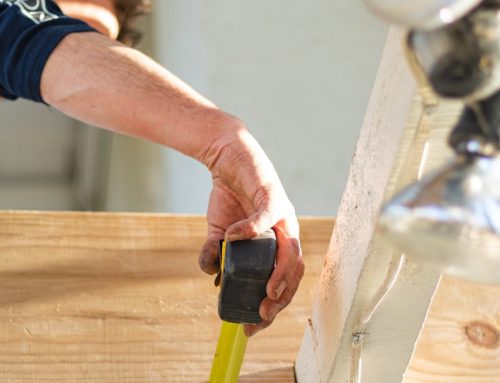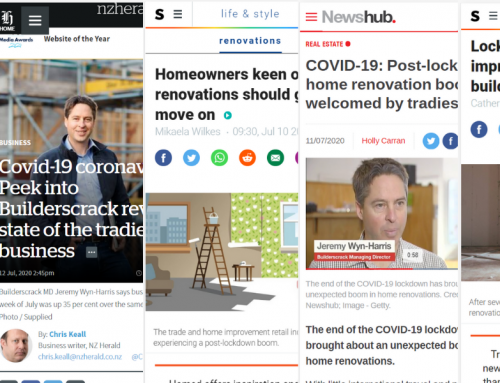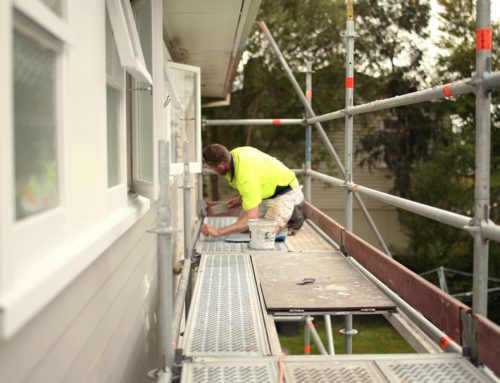When you’re pitching for a new job, your quote or estimate forms an essential tool that separates you from other tradies and can demonstrate to a homeowner that you’re the tradie for their job (and we’re not talking about price).
In this article, we take a deeper look at the differences between quotes and estimates, and how you can fine-tune yours to create an effective sales tool.
So what’s the difference? A quote or an estimate?
As you’re only too aware, there’s a big difference between providing a quote and providing an estimate. We frequently have homeowners asking about how the two differ. Make sure the homeowner is aware of the difference between the two and find out what it is they’re after or advise if one method is appropriate over the other for their job.
Providing quotes
When you provide a quote to the homeowner, let them know that this is an offer to do the job for a fixed price and any changes to the scope of work will need to be priced in addition.
Be specific, transparent, detailed
It can depend on the complexity of the task or the value of the job as to exactly how much detail you go into.
When the job is smaller in value or less complex – then it may not make sense to create an overly detailed quote. A quote which lays out the details simply may be all that’s needed.
For example, if you were sending a quote for painting a fence with wooden palings include details such as;
- Labour costs
- Material costs
- The paint colour to be used
- The start date and finish.
When the job is bigger in value or more complex – this is an opportunity to set your business apart by providing a detailed quote which essentially gives the homeowner a ‘mini contract’ to review. From a homeowner’s point of view, they’ll have one document that captures everything you’ve talked about and agreed on, they know what to expect of you and your team, and you can move forward knowing you’re both on the same page.
We’d suggest considering common elements you’d find in a standard building contract such as;
- Itemised task list and the labour costs (if the homeowner has opted to complete some tasks, such as demolition, specify this and talk with them about factoring it into your timelines)
- Itemised materials, specifying the type of materials to be used and the costs
- Start and finish dates
- Start and end times for your day
- Who will be doing the work – is it you, your team, subcontractors? (who can the homeowner expect to see on site?)
- Variable costs – if there are elements of the job that you can only ballpark, then specify your hourly rate and advise the homeowner of how this work will be assessed and the process for getting this cost approved.
- Payment terms – as we discuss later, don’t be precious about being upfront about your payment terms, it all helps a homeowner to feel they understand what they’re agreeing to.
By having this level of detail, you’re essentially providing the homeowner with a detailed scope of work.
And of course, if the job is valued at over $30,000 + GST then it will legally require a formal contract. You can read more about contract advice here.
Providing an estimate
You know that an estimate is your best guess at what the job entails and the associated costs, make sure your homeowner understands this too.
When you’re providing an estimate, there’s still value in capturing a level of detail which helps the homeowner feel they understand what is likely to be required and the approximate costs.
As with a quote, you can still include details such as;
- The expected tasks and labour costs
- Expected required materials
- Start dates
- Start and end times of your day
- Who you expect will be required to do the work
- How you’ll manage any additional work requirements and how you’ll price these (for example, what’s your hourly rate?)
- Your payment terms.
This way, while the expectation is set that this price may vary – your homeowner is starting out with a good understanding of what may be required to complete their job and how variations will be dealt with.
Tips for further fine-tuning your process
Other than providing appropriate detail on your quotes and estimates, what else can you consider to ensure your quotes and estimates are effective sales tools?
Utilising templates
- Are there templates you can create for certain types of work? These could be as simple as a checklist you complete when you’re discussing the job or a document with placeholder text to prompt you to include certain elements. The aim here is to create a timesaving technique which ensures all your quotes and estimates include an appropriate level of detail.
Getting your quotes and estimates out quickly
- Can you provide your quote or estimate more quickly than the competition? Think of this as an opportunity to demonstrate to the homeowner that their job is important to you, hence why you want to get the information through to them in a timely manner.
Checking your language
- Ensure the language on your quotes or estimates is clear, precise, polite – it should demonstrate your business is run to a high professional standard.
Make sure you account for your operating costs (including Builderscrack fees)
- Our fees should be accounted for as any other business cost would – and not specified as an additional cost. Check out our practical methods for doing this here.
And finally, value yourself
- Don’t underquote to win a job – while some homeowners gravitate to the lowest price, in our experience, if the price difference between the lowest quote and highest quote is too high, homeowners lose faith in both quotes and generally reject both. Read more about this in our article ‘Quoting – Avoid The Race To The Bottom’.
Although providing quotes and estimates is part of everyday business, they can heavily influence a homeowner when considering who to award their job to – so be sure to consider these as a crucial part of selling your business.





